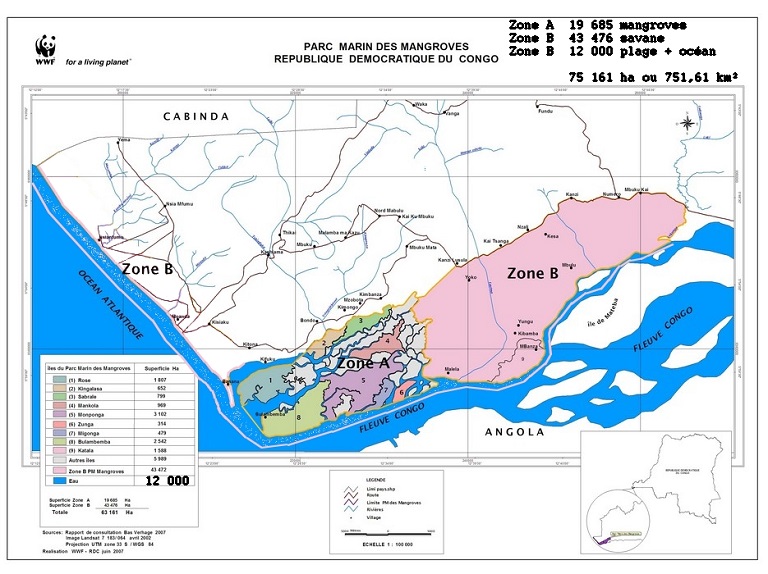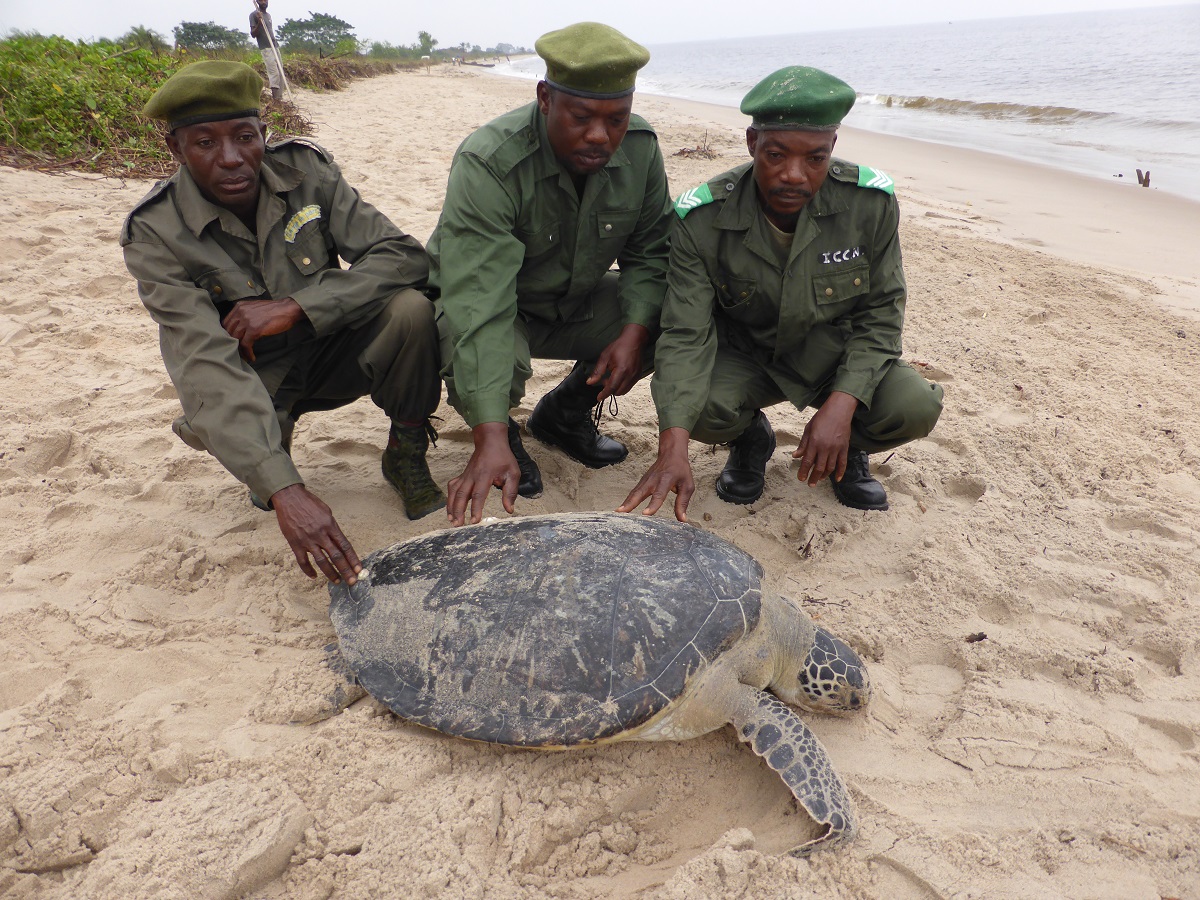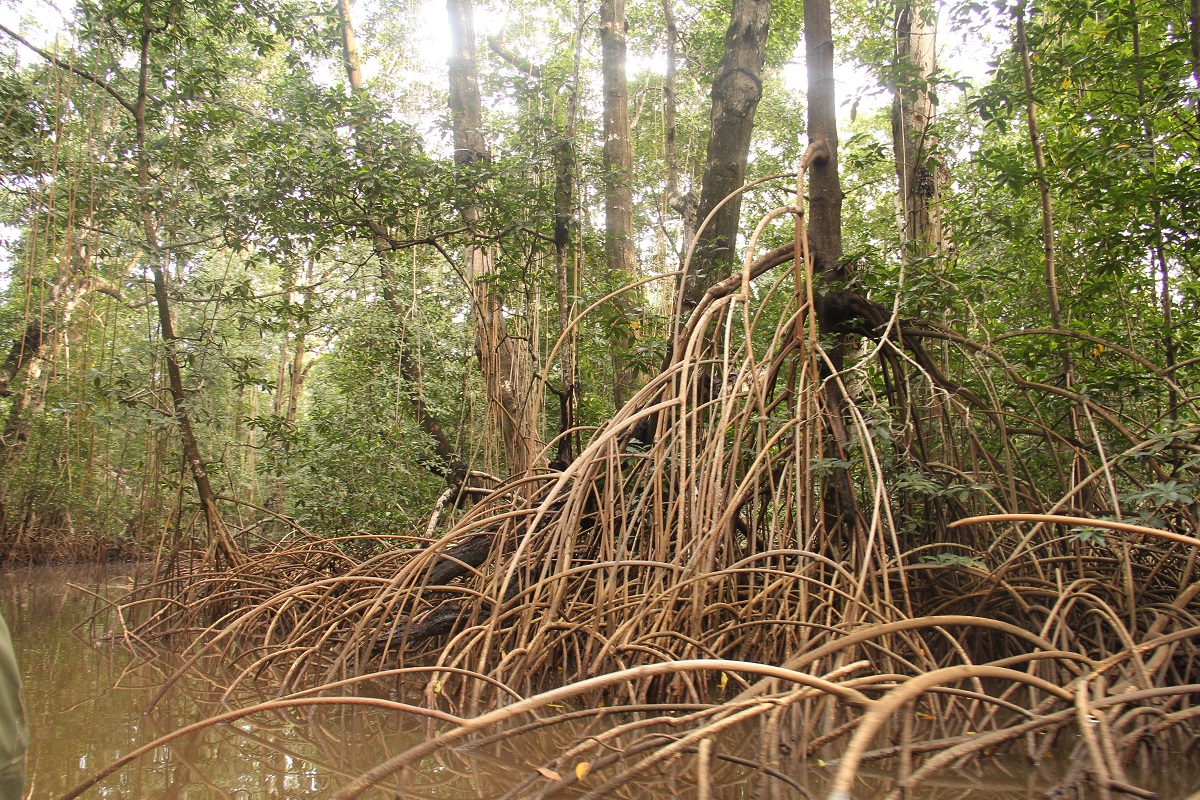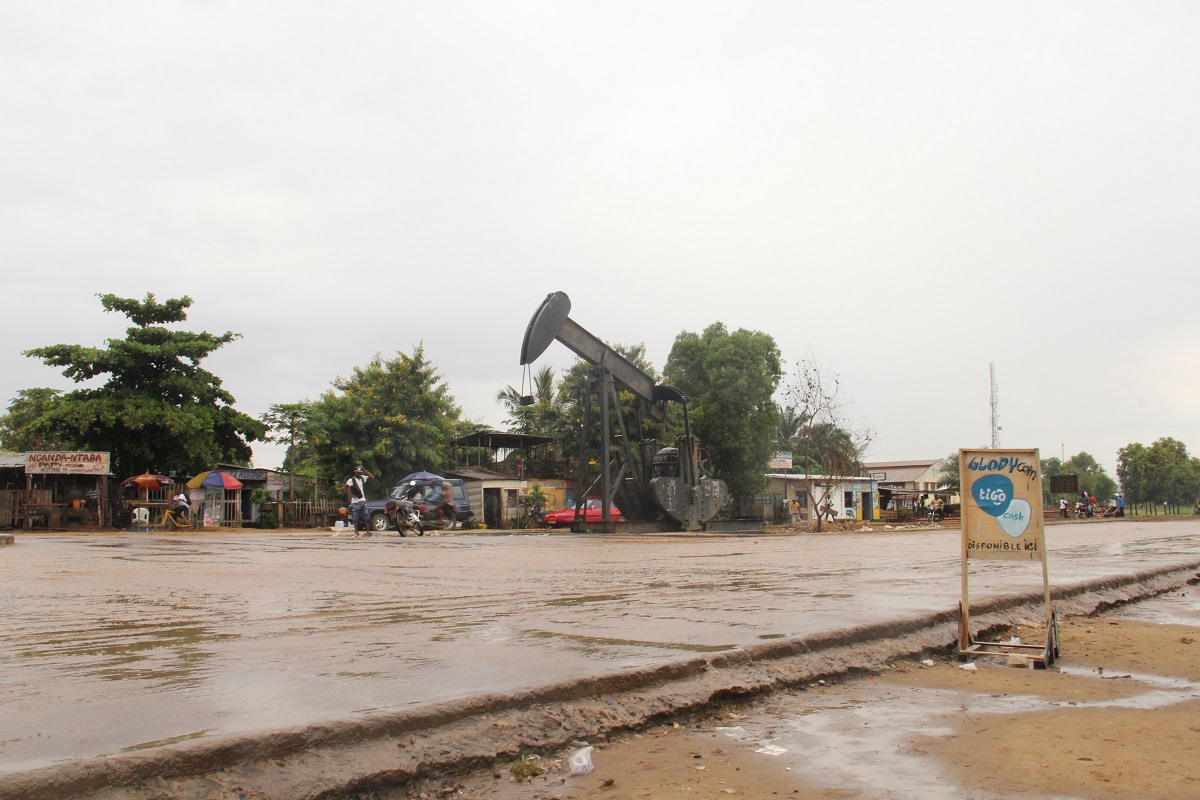- The park operates on a budget so small they can hardly afford to patrol the 76,000 hectares (188,000 acres) of mangroves, waterways, beach and ocean.
- Though the beach and savannah portions of the park are partially protected areas, a handful of communities have continuously lived there since long before the park’s creation.
- Park officials and rangers face the difficult task of protecting the vast area with just a handful of rangers and are up against generations of ingrained practices by residents, such as poaching turtles and their eggs.
Muanda, Democratic Republic of Congo – Two elephant tusks are wedged behind a photocopier. A stuffed antelope stands by the door and a large framed photograph of President Joseph Kabila hangs on the back wall. Cosma Wilungula sits behind his desk in Kinshasa, the Democratic Republic of Congo’s capital, patiently explaining his quandary.
For 12 years he’s run the Congolese Institute for the Conservation of Nature (ICCN), the government agency responsible for the country’s protected areas. He knows only too well the limits of his influence.
The truth is that the ICCN’s nearly 70 national parks, nature reserves and other protected areas — covering 25 million hectares or roughly 10 percent of the country’s landmass — are largely left to fend for themselves. Some rise to the challenge, while others don’t fare as well.
The Mangrove Marine Park, 250 miles west of Kinshasa, is one of the ICCN’s sites trying to make the best of the unpromising hand it’s been dealt. The 76,000-hectare (around 188,000 acres) expanse of ocean, beach, savannah and mangroves hugs Congo’s 23-mile strip of coastline and the home strait of its eponymous river.
Here, at the mouth of the Congo River, this waterway of monstrous dimensions concludes its epic passage across equatorial Africa and, raging at its denouement, has carved a 100-mile-long canyon into the floor of the Atlantic Ocean. In the aquatic forest which nestles into the Congolese side of the estuary, however, none of the ferocity is detectable. This riverine labyrinth of dense mangroves and little islands is utterly still, a haven to a variety of species, including manatees, and a bulwark against the coastal erosion wrought by the natural violence beyond.

A complex history
In theory no one should live inside the 20,000 hectares of mangroves, hardy trees which thrive in brackish wetlands and rise above the water on stilt-like roots, but funds envisaged for a resettlement program never materialized. A quarter of a century after the park was created, the forest continues to be home to seven villages and several semi-nomadic island-hopping communities.
Strictly speaking, all flora and fauna is off limits within the park’s boundaries, but inhabitants are allowed to catch shrimp and oysters, both of which are abundant, and some forms of sustainable fishing are accommodated. Felling trees to make charcoal or firewood and hunting animals such as monkeys and buffalo is illegal.
Marcel Collet, the park’s director since 2012, is a Belgian who has lived in Congo his entire life. Born into a family of coffee growers shortly before the end of colonial rule, he has spent more than three decades working with the country’s wildlife.
The park currently operates on a shoestring annual budget of between $100,000 and $150,000, the bulk of which comes from donations.

“The only thing the ICCN funds is the salaries of some of my full time staff,” Collet says, adding that these wages are “very small.” (The park has 21 permanent employees, including 12 rangers who are each paid about $45 a month). He knows exactly what he would do if he had the money to hire and equip enough rangers, who are usually men: “I’d make 20 to 30 permanent patrol posts in key places and we’d do multiple patrols in the forest every day.”
As matters stand, he has the means for a single team which tours the mangroves once every two or three days.
A delicate balance
The beach and savannah sections of the park, partially protected areas in which existing communities are permitted to live, are even more exposed. The park’s guardians are continually trying to impress upon its residents the enduring advantages of conservation, but the marshy savannah is effectively free from surveillance all year round.
Those wishing to poach buffalo and antelope or use the land for commercial agriculture can do so with near impunity. The Congo’s shoreline is also an important nesting site for several vulnerable species of sea turtles, including the leatherback (Dermochelys coriacea), the world’s largest living turtle. Collet can barely afford to put part-time rangers on the beaches during mating season. This year, due to financial constraints, he had to cut the program from five to three months meaning that turtle eggs will have been lost to high tides and lawbreakers.

Despite the challenges, there has been progress. Upon his arrival five years ago, Collet decided to enforce the previously ignored law criminalizing the killing of turtles within the park and introduced the seasonal initiative which protects laying females and their eggs. Poaching has been cut dramatically, the courts have given wrongdoers heavy fines and recently even a custodial sentence, and more than 60,000 baby turtles have been freed into the ocean, according to Collet.
He has also made headway in the mangroves against hunting and the scourge of deforestation. The density of mangrove wood makes it is a highly prized source of firewood and charcoal, indispensable for a population largely without access to electricity.
“Everyone prefers to make charcoal from the mangroves because one can use a very small amount to prepare two or three cooking pots,” says Louis Ngeri Mpayi, the park’s anti-poaching chief. Ngeri Mpayi and his rangers have destroyed more than 2,000 homemade charcoal furnaces in the park since 2012, sometimes dismantling up to 20 during a single patrol.
The mangrove forest and the turtle population might be faring better, though there is no official data available, but these improvements have come at the price of some degree of local resentment. Communities inside and outside the park are poor and the majority lack salaried jobs, living off their wits day-to-day.
Accurate statistics are hard to come by in Congo but in recent years separate reports by the International Monetary Fund and the African Development Bank have put the country’s unemployment rate among the economically active population at 43 percent and 73 percent respectively. The dearth of available work and the rising cost of basic goods feature prominently in most conversations on the Congolese coast. The application of rules which used to exist only notionally has made hard lives that much trickier.



